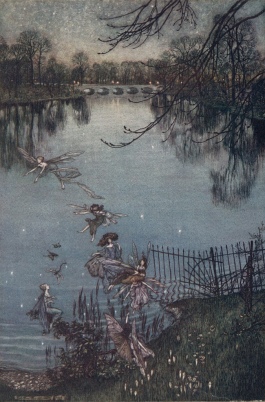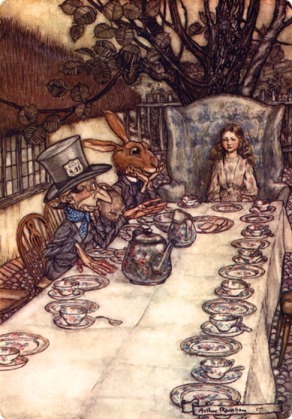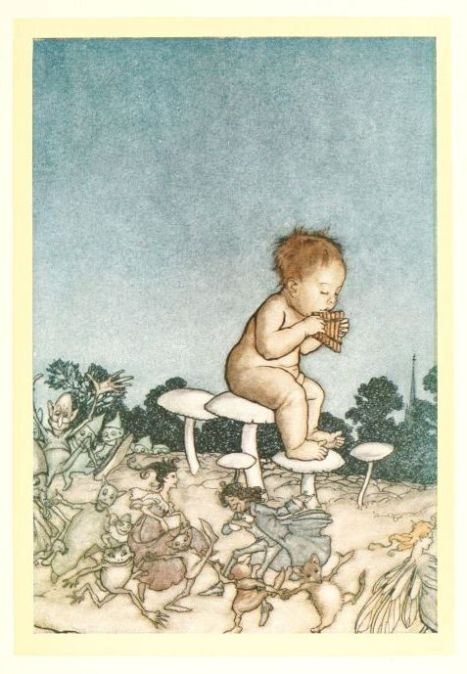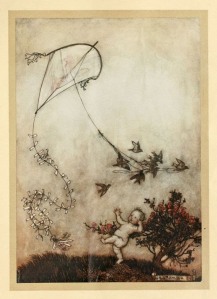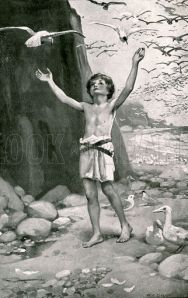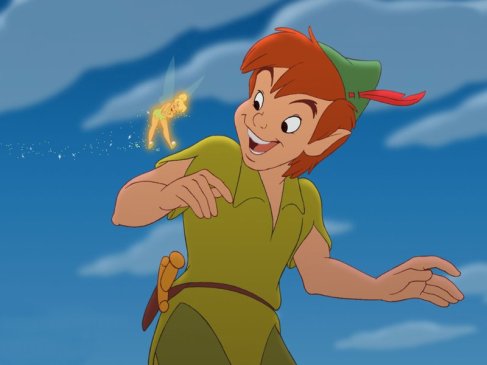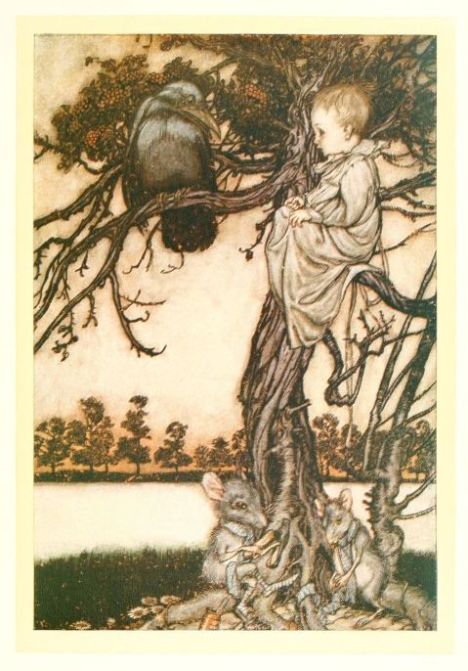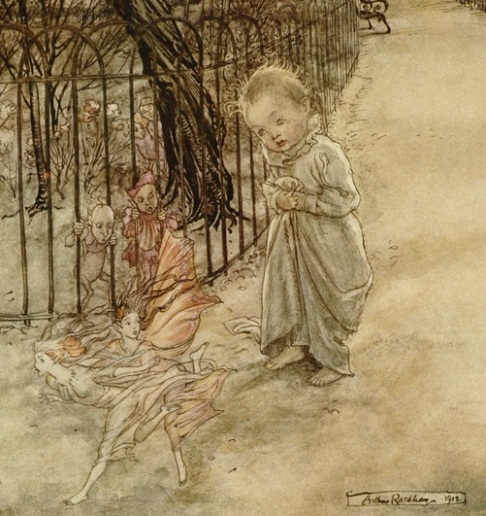J. M. Barrie is an individual whose childhood did not end with the progression of his age or rather, arguably, ever. Like the character of Peter Pan, he attempted to live a very whimsical life seemingly unscathed by the harsh realities of the world around him. He tried to appear as if he was never consumed by many of the qualities of adulthood and viewed many of life’s greatest complexities in the same way that a young child would. This could explain why his marriage to his wife reportedly persisted unconsummated or why he developed such a strong, playful relationship with the Llewelyn Davies boys. Aside from the belief that Barrie could have written many of his stories for children, I believe that a stronger argument can be made that he was expressing his own inner desires to live the life of Peter Pan in both Peter Pan in Kensington Gardens and later Peter and Wendy. This could explain why the themes of endless childhood and escape persist so strongly throughout his stories.
J. M. Barrie playing “Neverland” with Michael Llewelyn Davies
Barrie’s childhood life could be considered to be extremely traumatic by many. His brother, David, the favorite of his mother, died at a young age, which reportedly affected him so greatly that he became a victim of psychogenic dwarfism—a disorder which could have accounted for his small stature for the rest of his life. Barrie reportedly attempted on numerous occasions to fill the void in his mother’s life that was created by David’s death to partial avail. The theme of being replaced or not truly prized by his mother can be seen in one of Peter’s returns home from Kensington Gardens in Peter Pan in Kensington Gardens. However, I believe that the trauma of a life not fully recognized by his mother may have been what was truly too hard to handle perhaps even more so than his own brother’s death. The character Peter Pan is first introduced as an infant who escapes from his home on an adventure to Kensington Gardens, a place filled with magic and fantasy. As a reader, I believe that this portrays Barrie’s desire to escape to the Kensington Gardens and, later, Neverland that he described in his books—an opportunity to live a magical and forever-childlike life away from the problems associated with reality.
J. M. Barrie appears to have an obsession with childhood. Readers can see Peter’s eternal childhood as either a blessing or a curse, but I believe that Barrie truly envied this quality of his most famous creation. I believe that his inner feelings appear through much of the text, and it seems as if he views childhood and youth as a blessing and the consequential growth into adulthood as a curse. In Peter and Wendy, Barrie states that Wendy knew she needed to grow up at one point in her life after one of her conversations with her mother and that this realization often comes after the age of two, which he defines as being the beginning of the end. The claim is true that all children eventually must grow up no matter how hard they try to fight it. However, J. M. Barrie made an interesting case for the opposition. With the stature and emotional or even mental capacity of a child, he may have succeeded in temporarily elongating the length of his childhood through the creation of a character and story that he could live vicariously through—the story of Peter Pan.
